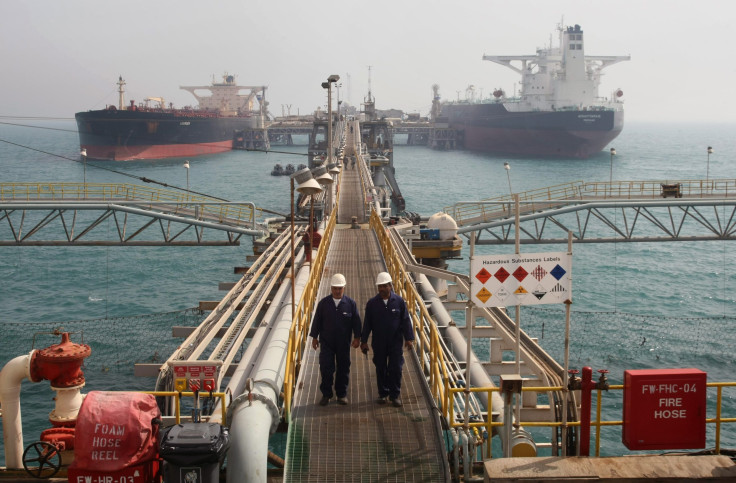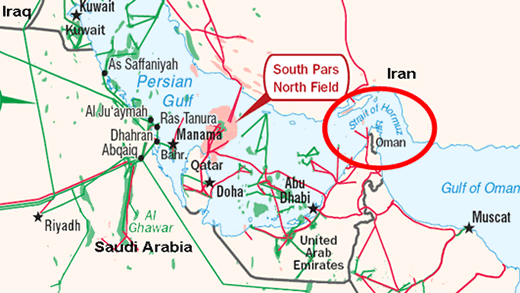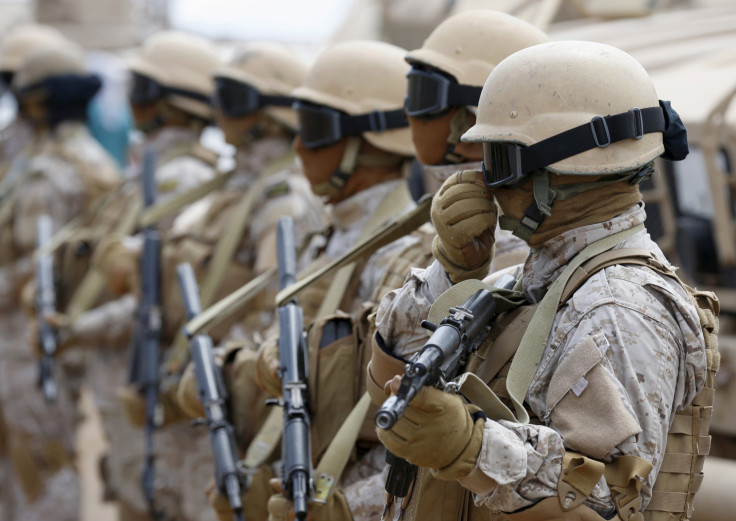Saudi, Iran Diplomatic Split Could Spark Street-Level Sectarian Strife Affecting The Global Oil Market

For three decades, the Shiite Muslim regime in Tehran and the Sunni Muslim Saudi kingdom have vied for the title of top regional powerhouse, with oil and ideology as their currencies. In the battle to shape a Middle East of their choosing, they deal in both, exporting energy and ideas to foment their neighbors’ conflicts — Yemen, Syria and Iraq have all been buffeted by the competing forces of Iran and Saudi Arabia. Global markets are looking on anxiously as the two nations square up to each other following the kingdom’s execution of prominent Shiite cleric Sheikh Nimr al-Nimr Saturday, the subsequent attack on Saudi's embassy in Iran and the end of diplomatic relations.
The nations sit on either side of the Strait of Hormuz, at the mouth of the Persian Gulf, home to the world’s biggest concentration of oil tankers. Some 17 billion barrels of crude pass through the strait daily, and if Iranian threats to block access come to fruition, oil prices could be pushed up as transportation in the world’s major oil-producing regions is restricted.
But analysts told International Business Times that the OPEC powerhouses’ diplomatic feud isn’t likely to significantly spike the energy markets. The real threat to the region’s coveted oil fields, they say, lies in the possibility of an increasing sectarian split at the civilian level.
“So far, it’s been a region rife with conflict. Right now, you don’t see the conditions of a conventional conflict in place,” said Nicholas A. Heras, a Middle East researcher at the Center for a New American Security (CNAS) and an associate fellow for the Jamestown Foundation. “What might spike the price of oil is if Iran’s Revolutionary Guard Corps decides to make the execution of Sheikh al-Nimr an ideological issue.”

Oil Surplus
Saudi Arabia and Iran are both swimming in oil, with the Sunni kingdom, the world’s largest exporter of oil, producing around 10 million barrels a day. The Shiite regime of Iran produces some 3 million barrels daily and is looking to expand in the coming years after U.N. sanctions are lifted as part of the nuclear agreement signed last year. This is not good news for Saudi Arabia, Iran’s direct competitor, which is already facing a drop in oil prices of roughly 40 percent in the past year as a result of overproduction. The weekend’s tensions saw Brent crude oil rise 2.3 percent Monday morning, but analysts say the spike isn’t likely to last and, at $38 a barrel, Brent crude is trading at an incredibly low level given the growing conflict in the Middle East.
“It’s amazing to think that Saudi Arabia would be at war and that oil would be so low,” Sultan Barakat, the director of research at the Brookings Doha Center and a senior fellow at the Center for Middle East Policy, told IBT. “What they haven’t calculated for is a war that isn’t coming to an end anytime soon.”
While there's no shortage of oil to go around, traders are worried that increased tensions between Iran and Saudi Arabia will prevent them from transporting it. Saudi Arabia uses two major chokepoints to export its oil: the Bab el-Mandeb strait, off the coast of Yemen, and the Strait of Hormuz, connected to Iran.

The Strait of Hormuz is one of the most important oil chokepoints in the world; any serious threat to the passage of oil through its waters from Iran would have a knock-on effect on the price of global oil. But the spat with Saudi Arabia, according to Heras, isn’t sufficient for Iran to jeopardize its international position, or its recently signed nuclear agreement, which will pave the way for the lifting of sanctions.
“It has not reached that point of escalation. Iran doesn’t want to risk the potential of being placed back in a sanctions box over a war of diplomatic words with Saudi Arabia,” Heras said. “The execution of Sheikh Nimr al-Nimr is not an existential threat to the Islamic Republic of Iran.”
Saudi Arabia’s other oil chokepoint, Bab el-Mandeb, under Yemeni control, is unlikely to be affected by the confrontation with Iran, even if some of Saudi’s allies in the war-torn country were left fuming after the Saudi kingdom, in addition to al-Nimr, executed several al Qaeda in the Arabian Peninsula (AQAP) members on terrorism-related charges. Since March 2015, Saudi has led a coalition of forces, including several Gulf allies and local Yemeni tribes, some of whom have ties to AQAP, against Yemen’s Iranian-backed Houthi rebels.
But experts say any retaliation against Saudi from AQAP supporters in Yemen is unlikely since both sides share a common enemy in the Houthis and their Iranian backers.
“The Saudis are vulnerable in Yemen, but it’s less likely that [the closure of Bab el-Mandeb] would happen,” said Katherine Zimmerman, a research fellow at the American Enterprise Institute and expert on al Qaeda. “AQAP is part of the coalition.”

The straits may be protected, but the streets are not, so Saudi Arabia and global oil markets could face a greater threat from increased sectarian divides.
“The real threat is from within Saudi Arabia [and potential] political instability,” Barakat told IBT. “If these actions taken by the government lead to a street uprising in the Eastern provinces of Saudi Arabia, then I think they are in trouble.”
The majority of Saudi’s oil production facilities are located in its eastern provinces, housing the majority of Saudi’s Shiite population, which make up only 20 percent of the Kingdom’s population. The Shiites are largely isolated from the rest of Saudi society and are not allowed to hold positions of power.
Among the eastern facilities is the Abqaiq plant, the largest oil processing facility in the world, which is under the control of Saudi’s national oil company Aramco. Previous attacks on the area, including a thwarted attack from Islamic State group affiliates in September, immediately caused a spike in oil prices.
The oil-rich Qatif district is also the hometown of al-Nimr and is the home base of his followers.
There have been no Shiite attacks on oil infrastructure in the area since the late 1980s, but observers fear that the recent execution could bring simmering sectarian strife to a boiling point. Saudi security forces shot an 8-year-old Shiite boy in the district Monday while carrying out search for individuals involved in a terrorist act, according to the state-run Saudi Press Agency.
In the short-term, geopolitical friction are unlikely to cause oil prices to rise more than a few percent but in the long-run, hostility between the two nations could have an explosive conclusion.
“The sad thing about this is the rise in sectarian tension at the street level, people to people,” Barakat said. “What [Saudi and Iran] have just done is going to fuel that more and more.”
© Copyright IBTimes 2024. All rights reserved.






















